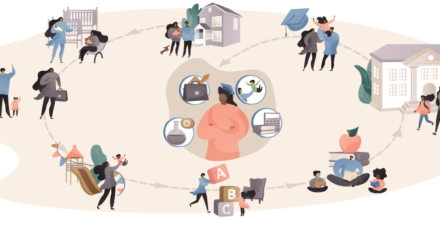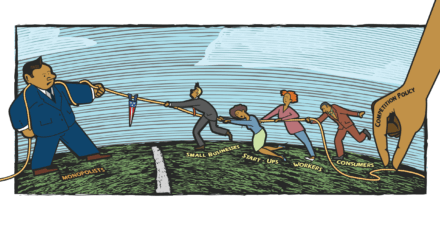The economic evidence behind 10 policies in the Build Back Better Act
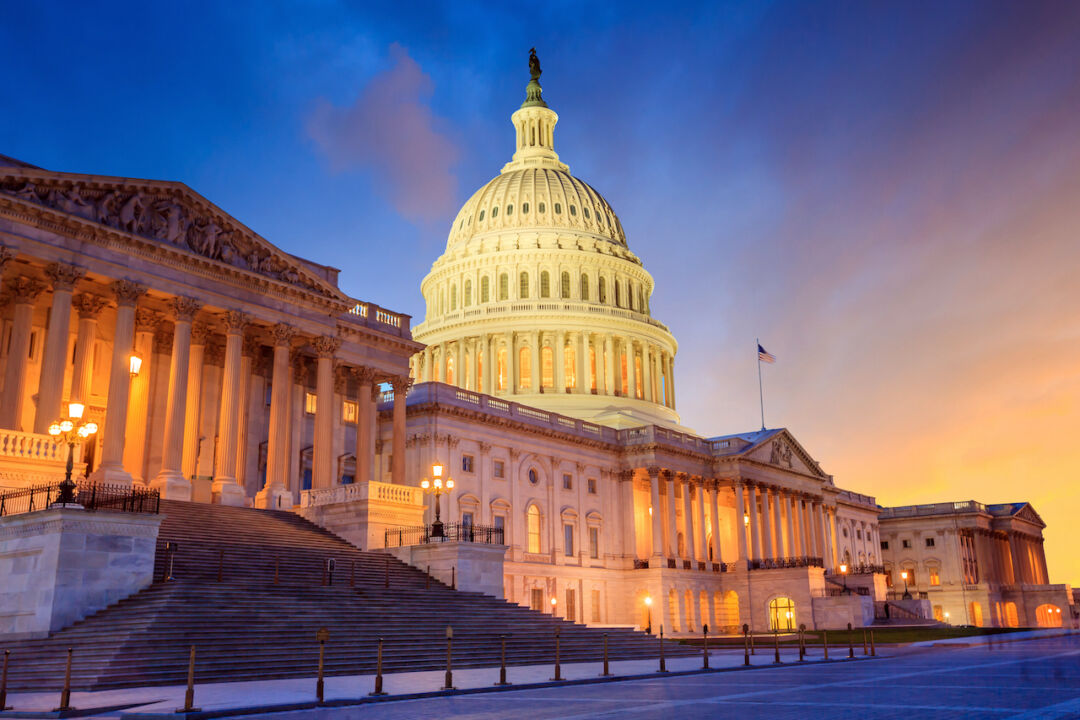
Overview
The U.S. House of Representatives late last week passed a key plank of President Joe Biden’s economic agenda, the Build Back Better Act. Coming on the heels of the president signing the Infrastructure Investment and Jobs Act on November 15, House passage of the other half of the president’s Build Back Better agenda signals momentum toward long overdue—and complementary—improvements in both the country’s physical and social infrastructure.
The Build Back Better Act enjoys privileged parliamentary status as a “budget reconciliation” bill, which means it can be passed by the U.S. Senate by a simple majority. It now moves across the Capitol, where it will likely be amended. But there is growing consensus in Congress on the core of the bill, which is designed to create jobs, cut costs, and grow the U.S. economy.
Misconceptions about inflation and debt have dominated the debate over the Build Back Better Act even though nearly all of the proposed spending is offset by provisions that would raise new government revenue. Most importantly, the $1.68 trillion of investments in the nation’s social and physical infrastructure would help expand the supply of labor and goods, and thus help ease cost pressures facing consumers, while contributing to sustained growth.
Indeed, the evidence detailed below demonstrates that, overall, the Build Back Better Act would deliver strong, stable, and broad-based economic growth up and down the income ladder and across the broader economy. (See Figure 1.)
Figure 1
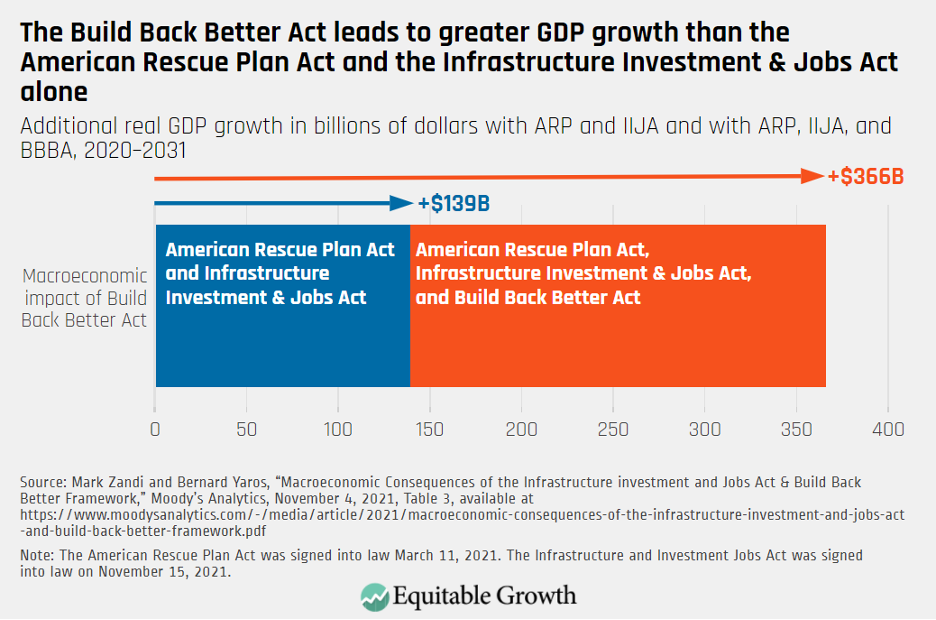
The Build Back Better Act includes 10 broad ways that would achieve these results. Specifically, the House-passed legislation would:
- Establish a national paid family and medical leave program
- Expand access to child care and establish a universal pre-Kindergarten program
- Make the Child Tax Credit permanently refundable and extend its expansion
- Extend the Earned Income Tax Credit expansion
- Invest in home- and community-based services
- Reduce costs of prescription drugs
- Enhance labor law enforcement capabilities
- Increase antitrust enforcement funding
- Make investments to combat climate change
- Improve tax enforcement and impose taxes on large corporations and high-income earners
Let’s now turn to each of these 10 consequential provisions in the bill and the economic evidence that underpins the reasoning for their anticipated success.
Establishes a national paid family and medical leave program
The Build Back Better Act authorizes a new national paid family and medical leave program of up to 4 weeks for U.S. workers. This paid leave program would allow individuals to take time to care for and bond with a new baby, care for a family member with a serious health issue, and care for themselves if struck by a personal health issue.
Today, many U.S. workers have to choose between caring for a loved one or bringing home a paycheck. Only 20 percent of private-sector workers access paid family leave through their employers, and new research finds that Black and Hispanic women have significantly less access to employer- or government-sponsored paid leave than White and Asian women.
Caregiving responsibilities are a significant driver of women’s exit from the U.S. labor force, as witnessed during the coronavirus pandemic, which disrupted more than half of family caregiving arrangements. Yet multiple studies find that access to paid leave increases the labor force participation rate of mothers, which we know is correlated with increased Gross Domestic Product. In one study, new mothers with paid leave are 18 percentage points more likely to be working a year after the birth of their child. (See Figure 2.)
Figure 2
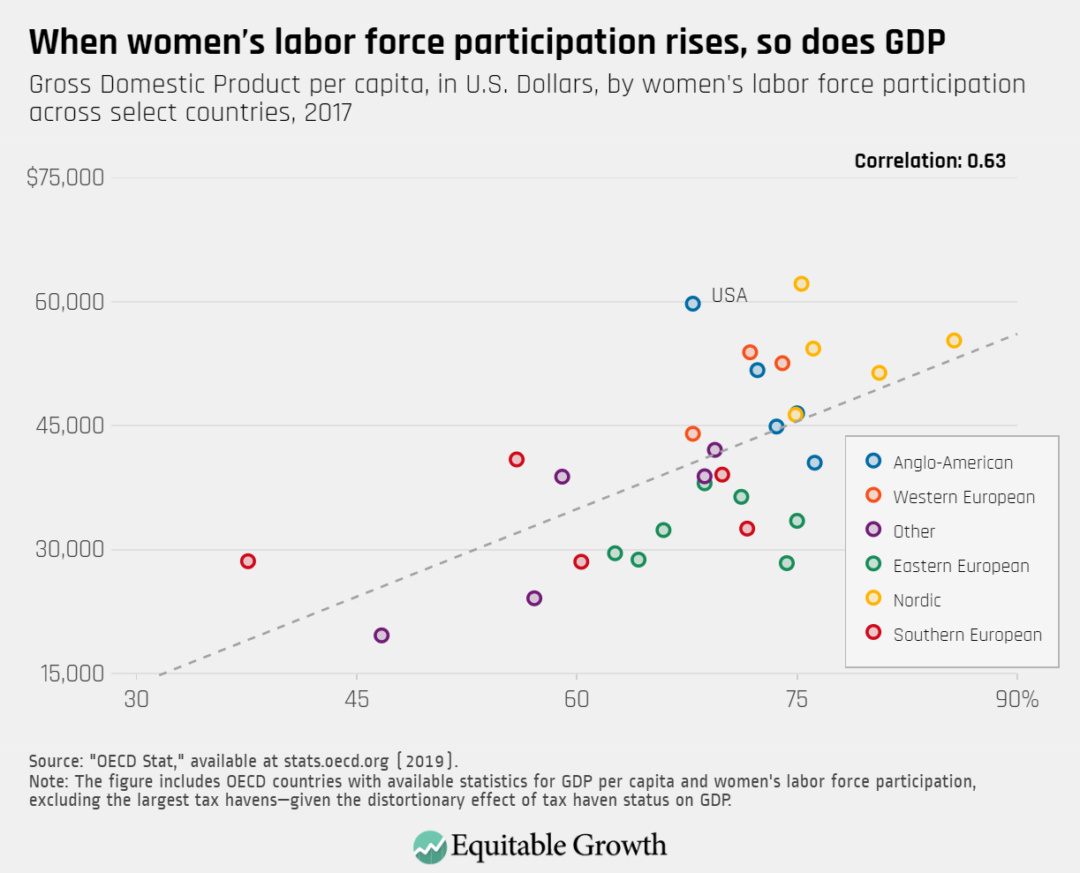
Similarly, a synthesis of research finds that paid medical leave protects families during a health shock, ensuring financial stability even when things go wrong. Moreover, researchers have seen paid leave improve child well-being, strengthening the human capital of the next generation.
Expands access to child care and establishes a universal pre-Kindergarten program
The Build Back Better Act invests in children and supports caregivers by delivering a universal free pre-Kindergarten program for 3- and 4-year-olds and allocating an estimated $100 billion to expand accessible, affordable, and high-quality child care, including by providing higher wages for child care workers.
Currently, child care is inaccessible and unaffordable for many U.S. families. Roughly half of U.S. families live in “child care deserts,” and the average annual price for center-based care was more than $11,000 for infants and $9,000 for 4-year-olds in 2019. For communities of color, child care is in even shorter supply. Further, the 2020 median hourly salary for child care workers was $12.88—or $26,790 per year—leaving child care workers without economic security and destabilizing the child care industry overall.
Detailed in Equitable Growth’s child care report and factsheet, research shows that achieving affordable, accessible, high-quality care and early education has benefits for both parents and their children. Studies find that a 10 percent reduction in child care costs increases maternal employment between 0.5 percent to 2.5 percent, and for every additional 100 child care slots that open up, a 2007 study in Maryland finds that women’s labor force participation rate goes up by 0.3 percentage points. Similarly, evidence from a universal preschool program in Washington, DC shows that mothers of these children increased their labor force participation rate by 10 percentage points.
For children, high-quality early care and education can lead to long-term improvements in their human capital—better education, economic, developmental, and social outcomes—all of which is also good for the broader U.S. economy. In fact, research finds that President Biden’s proposed universal preschool program—similar to the one included in the Build Back Better Act—pays for itself within 10 years and generates $4.93 in economic return in 35 years for every dollar spent.
Makes the Child Tax Credit permanently refundable and extends its expansion
The legislation makes the Child Tax Credit permanently refundable, important for lower-income families, and extends the expansion of the Child Tax Credit of up to $3,600 enacted earlier in 2021 as part of the American Rescue Plan in advanced monthly payments.
According to two studies, the expanded Child Tax Credit is projected to reduce childhood poverty in the United States between 40 percent and 45 percent, with poverty rates falling particularly rapidly for Black and Hispanic children. Additional research shows that income support programs, such as the Child Tax Credit program, also allow families to make investments in their children’s human capital development, improving children’s chances of upward intergenerational mobility and increasing both their future earnings and corresponding tax revenue.
Extends the Earned Income Tax Credit expansion
The Build Back Better Act extends the expansion of the Earned Income Tax Credit in the American Rescue Plan for low-wage workers without qualifying children through 2022.
The Earned Income Tax Credit has historically been successful at encouraging work and lifting families out of poverty. Research shows that the Earned Income Tax Credit for single parents led to increases in employment rates and a reduction in poverty. In one study, an increase in the Earned Income Tax Credit of $1,000 increased employment for single mothers by 7.3 percentage points and decreased poverty for families by 9.4 percentage points. For a childless adult making poverty-level wages specifically, federal taxes would push them further into poverty, but expanding the Earned Income Tax Credit can offset that effect.
Invests in home- and community-based services
The Build Back Better Act invests $150 billion in home- and community-based services that will allow more seniors and individuals with disabilities to receive services in their homes.
Seniors and individuals with disabilities have shown significant interest in and experienced benefits from home- and community-based services. In 2018, more than 800,000 Americans were on a Medicaid waiver waitlist to receive home- and community-based services, or approximately 45 percent of the total population receiving these services. Research also shows that seniors who transition from institutional care to home- and community-based services have a greater quality of life, including fewer unmet care needs.
The use of home- and community-based services, compared to institutional care, is good for the economy as well. One study finds that transitioning from nursing home facilities leads to an 18 percent to 24 percent decline in healthcare spending in a patient’s first year in home- and community-based care. Economists have also pointed out that investing in home- and community-based services will create jobs and boost growth.
Reduces costs of prescription drugs
The Build Back Better Act reduces out-of-pocket prescription costs by allowing Medicare to negotiate the price of prescription drugs that lack competition.
Evidence shows that rising drug prices—in which lack of competition plays an important role—impact national healthcare spending and harm access to medicines. Drug prices made up one-fifth of overall U.S. healthcare spending in 2020, or $476 billion in 2018—an increase of approximately $100 billion since 2014. What’s more, a 2019 study documents that 3 out of 10 Americans did not take a prescription drug as prescribed—such as by not filling a prescription or cutting pills—because of high costs.
Limited competition keeps prescription drug costs, and resulting national healthcare spending, high. One study finds that increased competition via generic drug entrants in the marketplace helped drop the price of drugs on average by 51 percent in the first year and 57 percent in the second year. Another study found that the U.S. healthcare system saved more than $1 trillion with the use of generic competitor drugs between 1999 and 2010.
Enhances labor law enforcement capabilities
The Build Back Better Act makes significant investments in the enforcement of labor laws. It provides more than $2 billion to rebuild agencies focused on worker protection, including the National Labor Relations Board, which protects the right of workers to organize into unions, and the Wage and Hour Division of the U.S. Department of Labor, which enforces labor laws, such as the federal minimum wage. The proposed law passed by the House also increases financial penalties for violations of wage theft and authorizes new financial penalties for unfair labor practices.
These investments would better protect the rights of workers and maintain a level playing field for compliant employers. Recent research shows that firms would be incentivized to abide by labor laws if there were a high chance of violations being detected. That’s why increasing the capacity of agencies to detect and respond to unfair labor practices, with the possibility of substantial monetary penalties, would likely change the calculation for employers and serve as an effective deterrent.
Increases antitrust enforcement funding
The Build Back Better Act provides $500 million each to the Federal Trade Commission and the U.S. Department of Justice’s Antitrust Division—the two federal antitrust enforcers—to support their work cracking down on unfair competition. This additional funding is a much-needed increase, as resource constraints over the past several years have limited these agencies’ ability to take enforcement actions against anticompetitive behavior. (See Figure 3.)
Figure 3

In an Equitable Growth co-authored report, we recommend an increase of $600 million in appropriations for the Federal Trade Commission and the U.S. Department of Justice’s Antitrust Division to implement a deterrence strategy to antitrust activities, including increasing investigations into problematic anticompetitive behavior and taking 60 to 100 enforcement actions a year rather than the current rate of roughly 40 enforcement actions per year.
Makes investments to combat climate change
The Build Back Better Act invests $555 billion to mitigate climate change, including promoting the shift to clean energy technologies and addressing the disproportionate harms that climate change brings to low-income communities and communities of color.
Tackling climate change is an essential investment in the U.S. economy. Extreme heat due to the effects of climate change leads to an increase in workplace injuries and is estimated to cost $525 million to $875 million in just California alone. Other research finds that students’ cognitive learning is hampered on hotter days, which can harm human capital formation important for broader economic growth. Research also finds that three times as many jobs are created for every $1 million invested in renewable energy or energy efficiency versus fossil fuels, and that these investments produce high returns over time.
Ensuring these investments are equitable in nature is particularly critical. Low- and middle-income communities and communities of color face a “double threat” of significant costs from climate-related hazards and fewer financial resources to pay for the costs associated with climate change mitigation measures. One example of how the proposed legislation would achieve this end is that it allows consumers to take advantage of the electric vehicle tax credit at the time of sale, so that low- and middle-income buyers do not have to be financially strained by the full cost of the vehicle until they can claim the tax credit at the end of the year.
Improves tax enforcement and imposes taxes on large corporations and high-income earners
The Build Back Better Act includes provisions that move the United States toward a more equitable tax system and aims to cover the costs of the bill, though the federal government has the capacity to deficit-finance these growth-enhancing investments. It invests $80 billion in the Internal Revenue Service so that it can combat tax evasion by high-income earners, adds a surtax to Americans making incomes higher than $10 million, establishes a new “minimum tax” on profitable U.S. corporations, and imposes a 15 percent country-by-country minimum tax on foreign profits consistent with the recent international agreement on a global minimum tax on multinational corporations.
Lower taxes on those at the top of the income ladder results in rising inequality, which has obstructed, subverted, and distorted the pathways to broadly shared growth. In contrast, research finds that higher top tax rates are correlated with higher economic growth for most Americans.
Further, strengthening the IRS’s capacity to audit high-income earners would help address the annual $700 billion in U.S. revenues lost to tax evasion. One study finds that the top 1 percent of income earners hide 20 percent of their income from tax collectors.
Multinational corporations have also found ways to not pay taxes. Historically, the U.S. tax system has encouraged profit shifting by multinational corporations to tax havens in other countries, costing the United States more than $100 billion in revenues per year. With the Build Back Better Act, the global minimum tax of 15 percent on large multinational corporations’ profits earned overseas will begin to crack down on this tax evasion. (See Figure 4.)
Figure 4
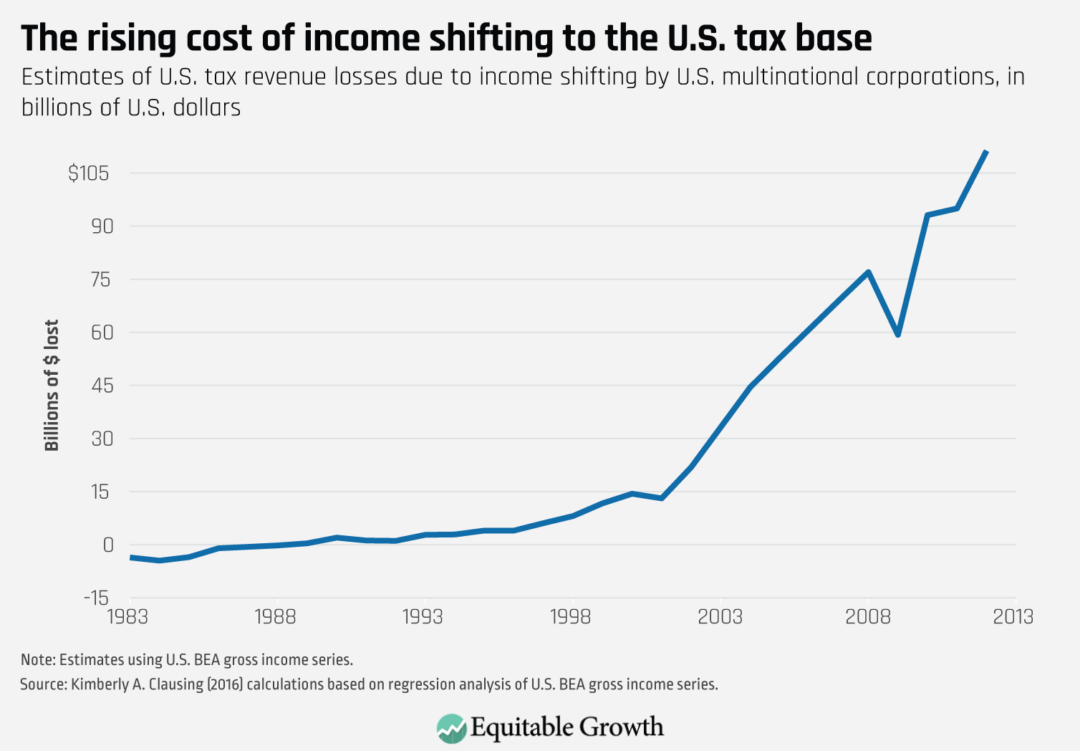
In addition, the 15 percent global minimum tax on profitable corporations in general would help to counteract corporations’ relatively low effective tax rate—as low as 10 percent for some industries—especially as we know that the tax cuts in 2017 were economically wasteful.
Conclusion
Taken together, these policies make significant investments in U.S. workers and their families with the potential to have positive short- and long-term economic outcomes on individuals, households, and the broader U.S. economy. To be sure, the House missed out on opportunities to address certain structural issues in our economy, such as reforming our patchwork Unemployment Insurance system, taxing the unrealized capital gains of billionaires, and improving IRS tax reporting. And, certainly, there could be retrogressive changes to the proposed law in the Senate.
Nonetheless, these 10 policy provisions detailed above go a very long way toward addressing longstanding economic fragilities rooted in economic inequality and exacerbated across racial and gender lines. Should these broad policies become enacted into law, the evidence demonstrates they would deliver on the promise of structural economic change that would help U.S. workers and their families and the broader economy achieve strong, stable, and broad-based growth.





